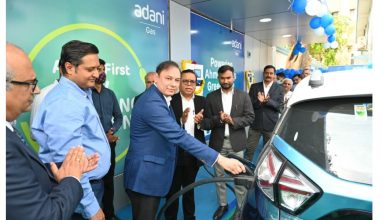RIL advances toward $1-1.5/Kg green hydrogen goal
January 23, 2024– Reliance Industries Ltd (RIL) is making progress towards its goal of producing green hydrogen at a cost of $1-1.5 per kilogram. The company has secured product-linked incentives (PLIs) in the renewable energy sector. This includes incentives for solar modules and advanced chemistry cell battery storage. These incentives are expected to help RIL achieve its target cost of green hydrogen. The target cost is currently around $3 per kilogram.
Green hydrogen is a promising and sustainable energy carrier produced through a process called electrolysis. This process involves splitting water into hydrogen and oxygen using renewable energy sources like wind or solar power. Unlike conventional hydrogen production methods that rely on fossil fuels, green hydrogen generates zero greenhouse gas emissions. Moreover, this makes it a key player in the global transition to clean energy.
At the 2021 International Climate Summit, RIL chairman and managing director Mukesh Ambani revealed his company’s aim. The goal is to reduce the cost of hydrogen to less than $1 per kilogram in ten years, dubbed the ‘1-1-1 target’ for green hydrogen.
In the first round of the solar module PLIs, RIL earned $300 million for four gigawatt (GW). In the second round, they earned $400 million for six GW. Additionally, the business received PLI for 5 GW of advanced chemistry cell (ACC) battery storage. RIL has secured incentives of $0.3/kg for an electrolyser with a 300 megawatt capacity. Additionally, they have secured $0.23/kg for a green hydrogen capacity of 90,000 metric tons annually. Nuvama Research stated in a paper dated January 20 that this adds up to an incentive of $0.5/kg. Moreover, this subsidizes 13% of the current cost of creating green hydrogen.
Reliance Industries (RIL) is strategically venturing into solar manufacturing and generation, aiming for 100 GW of solar energy by 2030. RIL plans to acquire a high-efficiency production line for HJT cells with a 5 GW capacity through a supply agreement with Suzhou Maxwell Technologies. The company plans to commission 5 GW of HJT modules and 5 GWh of LFP (lithium iron phosphate) battery capacity by 2QFY25. This initiative primarily aims at producing an initial 20 GW renewable capacity for its captive setup to fulfill its annual energy needs. Furthermore, this information is according to a Jefferies India research report dated December 5.
RIL’s green energy objectives are anticipated to increase its long-term worth and profitability while also helping India meet its climate targets. By 2035, the corporation plans to be net carbon zero.





